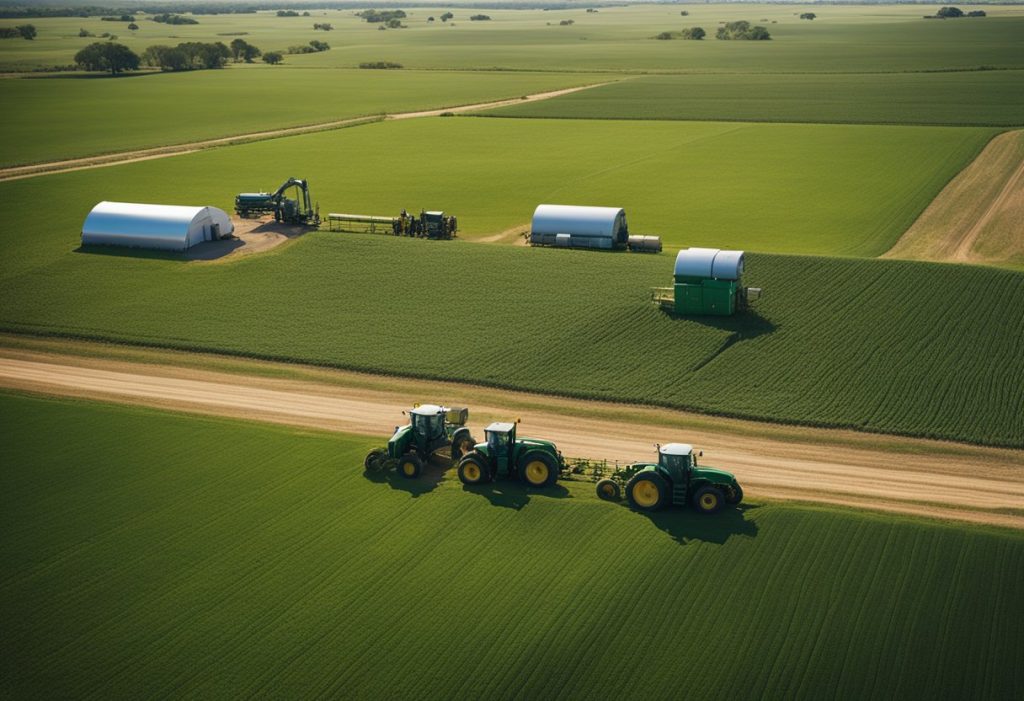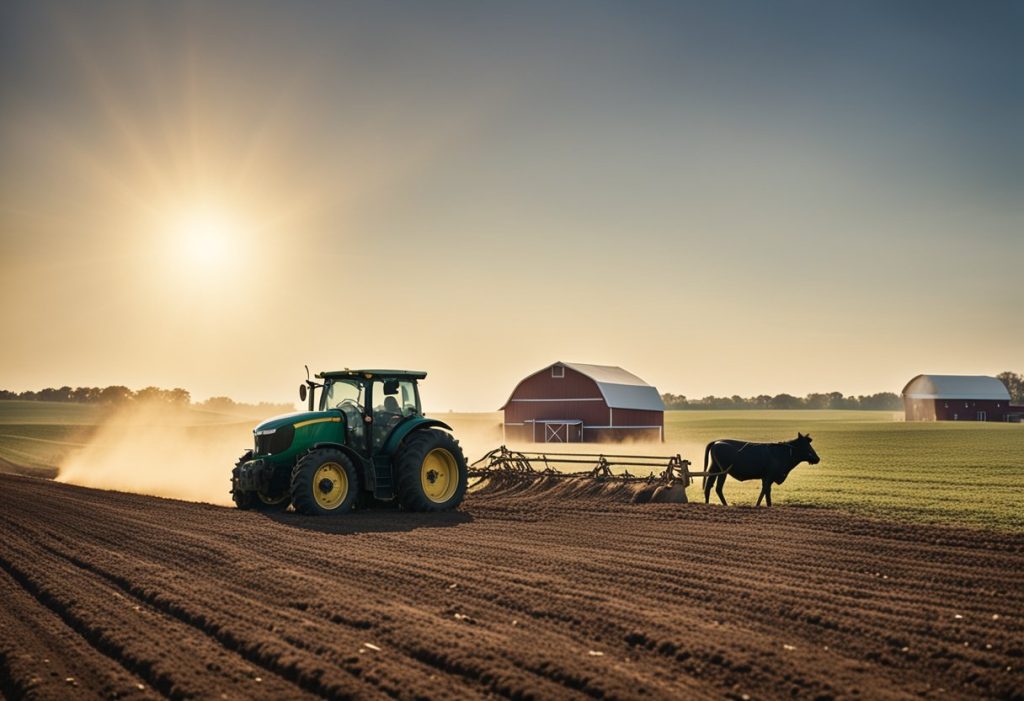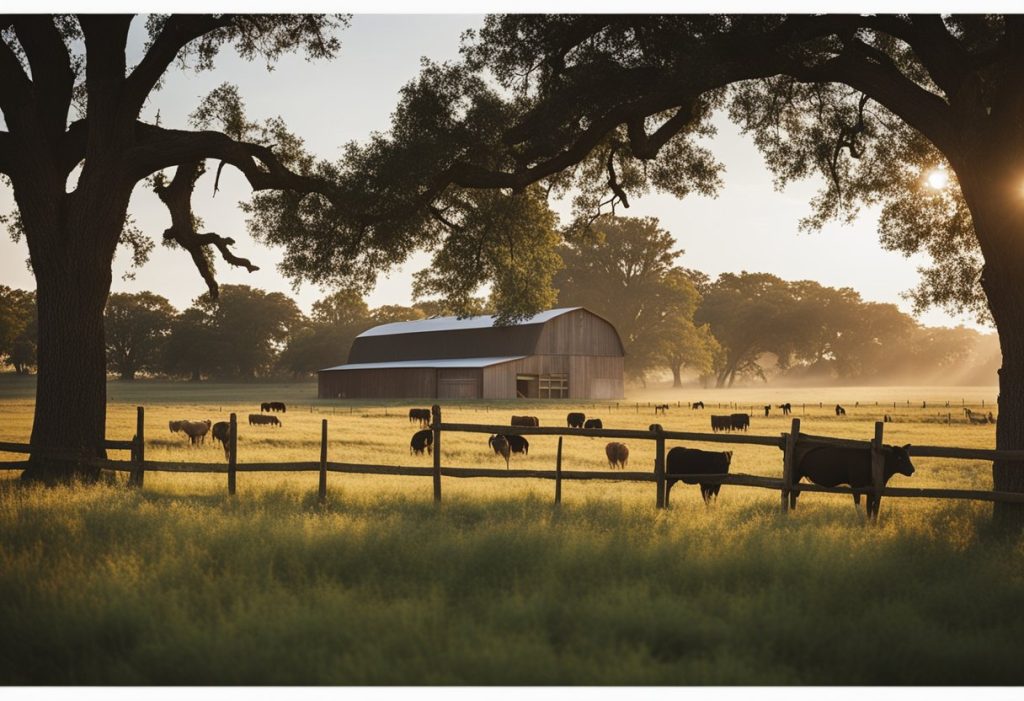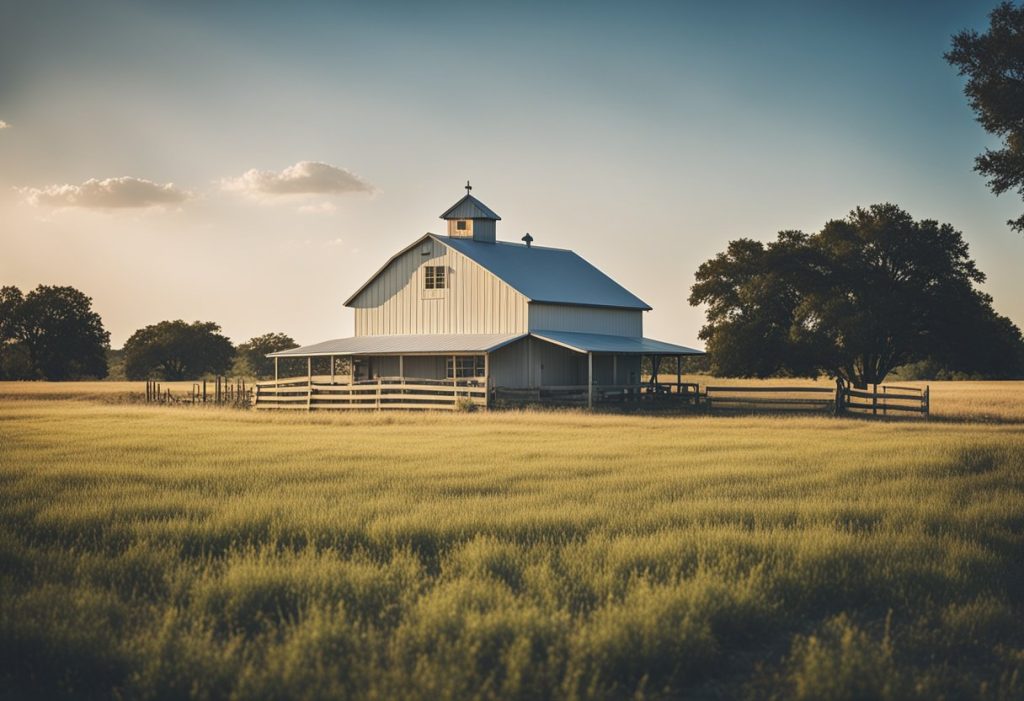Texas is known for its vast agricultural industry, which contributes significantly to the state’s economy. As a result, the state has implemented various policies and exemptions to support the agricultural sector. One of the most significant exemptions is the agricultural or ag exemption, which provides tax relief to landowners who use their land for agricultural purposes.

Under the ag exemption, landowners can receive a significant reduction in their property tax bill if their land is used primarily for agricultural purposes. This exemption is available to a wide range of agricultural activities, including farming, ranching, and timber production. However, to qualify for the exemption, the landowner must meet specific requirements set by the state, such as producing a minimum level of agricultural income or maintaining a certain amount of land in agricultural use.
The ag exemption is an essential tool for many landowners in Texas, as it helps to reduce their property tax burden and supports the state’s agricultural industry. However, the exemption can be complex, and it is essential for landowners to understand the requirements and limitations of the exemption to ensure they are in compliance with state regulations. This article will provide an overview of the ag exemption in Texas and explore its impact on landowners and the state’s agricultural sector.
Understanding Agricultural Exemptions

Agricultural exemptions in Texas are a type of tax exemption that allows qualifying landowners to reduce their property taxes by designating their land for agricultural use. This exemption is intended to encourage and support agriculture in Texas, which is a vital industry for the state.
Definition of Agricultural Use
To qualify for an agricultural exemption, the land must be used for agricultural purposes, such as cultivating crops, raising livestock, or producing timber. The landowner must also meet certain requirements, such as earning a minimum amount of income from the agricultural operation or maintaining a certain amount of acreage.
Benefits of Ag Exemptions
There are several benefits to obtaining an agricultural exemption in Texas. One of the most significant benefits is the reduction in property taxes, which can result in significant savings for landowners. Additionally, agricultural exemptions can provide protection against eminent domain, as well as access to certain government programs and grants.
It is important to note that obtaining an agricultural exemption requires careful planning and adherence to strict requirements. Landowners must be able to demonstrate that their land is being used for agricultural purposes and maintain detailed records of their activities. Failure to meet these requirements can result in the loss of the exemption and potentially significant penalties.
In conclusion, agricultural exemptions are an important tool for supporting and promoting agriculture in Texas. By understanding the requirements and benefits of these exemptions, landowners can take advantage of the savings and protections they provide while contributing to the state’s vital agricultural industry.
Eligibility and Requirements

Qualifying for Ag Exemption
In Texas, there are certain eligibility requirements that must be met in order to qualify for an agricultural (ag) exemption. The property owner must use the land for agricultural purposes, such as farming or ranching. The property must also be used to produce agricultural products for sale, such as crops or livestock. Additionally, the property must have been used for agricultural purposes for at least five of the previous seven years.
Minimum Acreage Requirements
To be eligible for an ag exemption, the property must also meet certain minimum acreage requirements. For example, if the property is used for grazing, it must be at least 10 acres in size. If the property is used for timber production, it must be at least 20 acres in size. These minimum acreage requirements ensure that the property is being used for legitimate agricultural purposes.
Degree of Intensity Standards
In addition to meeting the minimum acreage requirements, the property must also meet certain degree of intensity standards. This means that the property must be used in a way that is consistent with the local area’s agricultural practices. For example, if the property is located in an area where crops are commonly grown, the property must be used for crop production. If the property is located in an area where livestock is commonly raised, the property must be used for livestock production.
Overall, in order to qualify for an ag exemption in Texas, the property owner must meet certain eligibility requirements, including using the land for agricultural purposes for at least five of the previous seven years, meeting minimum acreage requirements, and meeting degree of intensity standards. By meeting these requirements, property owners can save on property taxes and continue to use their land for agricultural purposes.
Types of Agricultural Exemptions

In Texas, there are several types of agricultural exemptions available for farmers and ranchers. These exemptions are designed to provide a tax break to those who use their land for agricultural purposes. Here are the three main types of agricultural exemptions available in Texas:
Livestock and Crops
One of the most common types of agricultural exemptions in Texas is for livestock and crops. This exemption applies to land that is used for the production of crops or the raising of livestock. To qualify for this exemption, the land must be used primarily for agricultural purposes and must have been used in this way for at least five of the preceding seven years.
Timber Production
Another type of agricultural exemption in Texas is for timber production. This exemption applies to land that is used for the production of timber. To qualify for this exemption, the land must be used primarily for timber production and must have been used in this way for at least five of the preceding seven years.
Wildlife Management
A third type of agricultural exemption in Texas is for wildlife management. This exemption applies to land that is used for the management of wildlife. To qualify for this exemption, the land must be used primarily for wildlife management and must have been used in this way for at least five of the preceding seven years.
Other types of agricultural exemptions in Texas include beekeeping and grazing animal units. However, these exemptions are less common and may not apply to all farmers and ranchers. It is important to consult with a tax professional to determine which agricultural exemptions apply to your specific situation.
Valuation and Taxation

Productivity Value Assessment
In Texas, agricultural land is valued based on its productivity value, which is the value of the land based on its ability to produce crops or livestock. The productivity value is determined by the Texas Comptroller of Public Accounts, and it is based on the average net income that the land would generate over a five-year period.
The productivity value assessment is used to calculate the taxable value of the land. Agricultural land is taxed at a lower rate than other types of property, such as residential or commercial property. The lower tax rate is intended to help farmers and ranchers keep their land in production.
Calculating Property Taxes
To calculate the property taxes for agricultural land, the taxable value of the land is multiplied by the local tax rate. The tax rate is set by the local taxing authorities, such as the county, city, or school district.
The property tax bill for agricultural land can vary depending on the market value of the land, which is the price that the land would sell for on the open market. However, the taxable value of the land is based on the productivity value assessment, not the market value.
It is important for farmers and ranchers to understand how their property taxes are calculated and to take advantage of any available exemptions or discounts. In Texas, there are several exemptions available for agricultural land, such as the 1-d-1 Open-Space Agricultural Valuation and the Wildlife Management Use Valuation. These exemptions can help reduce the property tax bill for farmers and ranchers.
Overall, the valuation and taxation of agricultural land in Texas is based on the productivity value assessment, which takes into account the land’s ability to produce crops or livestock. The lower tax rate for agricultural land is intended to help farmers and ranchers keep their land in production, and there are several exemptions available to help reduce the property tax bill.
Application and Renewal Process
Submitting Your Application
To apply for an agricultural exemption in Texas, property owners must submit an application to their local county appraisal district. The application must include documentation that demonstrates the property is being used for agricultural purposes, such as raising livestock or growing crops.
The application process varies by county, so it’s important to contact the local county appraisal district to obtain the specific requirements for the application. Property owners may also be required to provide additional documentation, such as proof of income from the agricultural operation or proof of ownership of the property.
Maintaining Eligibility
Once an agricultural exemption has been granted, property owners must continue to meet the eligibility requirements to maintain the exemption. This includes using the property for agricultural purposes and generating a minimum amount of income from the agricultural operation.
Property owners must also renew their agricultural exemption annually. The renewal process is similar to the initial application process and requires property owners to provide documentation that demonstrates continued eligibility for the exemption.
It’s important to note that if the property is sold or the use of the property changes, the agricultural exemption may be revoked. Property owners should notify their local county appraisal district of any changes to the property’s use or ownership.
Overall, the application and renewal process for agricultural exemptions in Texas requires property owners to provide documentation that demonstrates the property is being used for agricultural purposes and meets the eligibility requirements. By following the specific requirements outlined by the local county appraisal district, property owners can ensure that they maintain their agricultural exemption and receive the associated tax benefits.
Frequently Asked Questions

What criteria must be met to qualify for an agricultural exemption in Texas?
To qualify for an agricultural exemption in Texas, the land must be used primarily for agriculture, timber production, or wildlife management. The landowner must also meet certain criteria, such as earning a minimum of $1,000 in agricultural income per year or owning a minimum of 5 acres of land.
How many livestock are needed per acre to maintain an agricultural exemption in Texas?
The number of livestock required per acre to maintain an agricultural exemption in Texas varies depending on the type of livestock and the region of the state. Generally, the minimum requirement is one animal unit per five acres, but this can vary based on factors such as soil type, rainfall, and vegetation.
What are the tax savings associated with an agricultural exemption in Texas?
The tax savings associated with an agricultural exemption in Texas can be significant. Landowners who qualify for an agricultural exemption can receive a reduction in property taxes of up to 95% on the appraised value of their land. This can result in thousands of dollars in savings each year.
What is the smallest amount of land that can be eligible for a wildlife management exemption in Texas?
To be eligible for a wildlife management exemption in Texas, a landowner must have at least 20 acres of land. However, if the land is located in a county with a population of less than 7,500, the minimum requirement is only 10 acres.
Can you provide a summary of different agricultural exemptions available in Texas?
In addition to the standard agricultural exemption, Texas offers several other exemptions for landowners who meet certain criteria. These include the wildlife management exemption, the timber production exemption, and the open-space land exemption. Each exemption has its own set of requirements and benefits.
How can I verify the status of an agricultural exemption in Texas?
Landowners can verify the status of their agricultural exemption by contacting their county appraisal district. The appraisal district can provide information on the status of the exemption, as well as any requirements or deadlines for renewal.